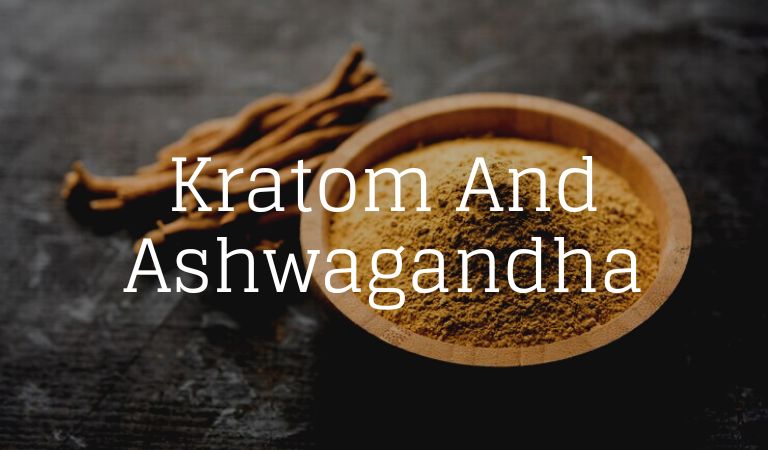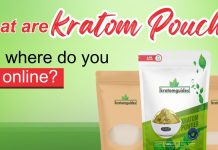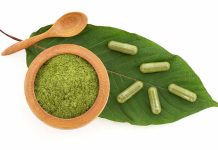Suppose you’re a Kratom devotee seeking a way to increase the efficacy of your Kratom powder. In that case, you’ll want to keep reading to learn everything there is to know about Ashwagandha and how it complements Kratom. Learn about Ashwagandha’s benefits and know if Kratom Ashwagandha combination is safe or not.
What is Kratom?
To alleviate discomfort, the leaves of the Southeast Asian tree known as Kratom have been used for centuries. The plant contains alkaloids called mitragynine and 7-hydroxymitragynine. These alkaloids are Kratom’s primary active ingredients and are responsible for its effects.
You can use Kratom in a variety of forms. Raw leaves are sometimes chewed by local farmers, although it is more typical to see the leaves crushed, brewed as tea, or processed into capsules, pills, or liquids. Kratom gummies are the latest addition. The Kratom in these edibles is around 20 milligrams. You can find all the benefits found in powder, capsules, and extracts are included in these as well.
The Kratom community recognizes a wide variety of Kratom strains. The origin of the plant usually determines its name. The Kratom leaves’ active components are modified by the environment in which they matured over many years. To name a few examples: Maeng Da, Malay, Bali, Borneo, etc.
What is Ashwagandha?
Traditional Indian medicine, or Ayurveda, makes use of the plant Ashwagandha (Withania somnifera), often known as Indian ginseng. Its root extract is the most frequent dietary supplement form, while other portions of the plant are sometimes employed. In Sanskrit, Ashwagandha means “smell of a horse,” which is indicative of the herb’s scent.
Ashwagandha contains alkaloids such as anaferine, anahygrine, etc., as shown by studies. Ashwagandha’s wide range of health benefits is the product of a complex interaction between the plant’s many chemical components. Ashwagandha may be used in many forms, including capsules, powders, teas, churna balls, and even ice cream. If you take Ashwagandha orally, you shouldn’t have any problems after using it for up to three months. However, Ashwagandha’s safety over the long term is unknown.
Ashwagandha is thought to increase the body’s resistance to stress because of its adaptogen status. Although Ashwagandha has several purported health advantages, most of these claims are unsupported by human studies.
Which is better?
Despite their very different mechanisms, these two plants provide some of the same advantages.
The effects of Kratom are more like a roller coaster: after ingestion, they build swiftly to a peak and then gradually go away. Unlike Ashwagandha, Kratom has a direct impact on the body. The effects of Ashwagandha are slower, more subtle, and may not become apparent for a week or more. This herb’s adaptogenic properties mean that it maintains stability rather than bringing about noticeable alterations or impacts.
Ashwagandha and Kratom are both available as dry powder, capsules (the most popular delivery method), and liquid extracts. Ashwagandha powder dosages may be anything up to 0.2 ounces. Kratom is used in doses ranging from 0.5 to 0.5 ounces.
The question is, which is preferable? Kratom is the right substance for you to use if you want to feel the effects of a high quickly. Ashwagandha is superior if you’re hoping to regain a higher level of equilibrium. In the end, everything depends on the individual and their requirements.
Kratom and Ashwagandha – How do they complement each other?
Indirectly, Kratom and Ashwagandha may interact. The tension between them is low. There may be some moderate interactions between the two, particularly with long-term usage or higher doses.
There are two ways in which Kratom and Ashwagandha might influence one another. First, there is a potential antagonistic interaction between Kratom and Ashwagandha. The relief from each of these substances is enhanced when taken at a modest dosage.
Second, Ashwagandha could hasten the breakdown of Kratom, even though there is almost little probability of direct metabolic interaction between the two plants. This may potentially reduce Kratom’s efficacy by reducing its duration in the body.
Can You Take The Two Together?
The use of Kratom and Ashwagandha together may result in some modest, indirect interactions. Taking them together in low doses and for short periods of time is considered to be safe. When used with Ashwagandha, Kratom’s calming and relaxing effects are amplified.
However, long-term or excessive use of any medicine may produce more strong results, along with some unwelcome side effects. Therefore, these substances should be used only after discussing the risks and benefits with your doctor. If you notice any unusual symptoms, it’s important to visit a doctor right away.
Can you Develop tolerance?
Increasing the intake of Kratom and Ashwagandha would inevitably mean that you will get used to it, and soon you will increase your dosage to feel the same effects. Individuals who regularly use Kratom may develop tolerance to the effects of the drug. Regular Kratom use for at least a month might lead to that. If you develop tolerance to Kratom, you may not get the same high as you had when you initially started taking it. Ashwagandha, on the other hand, might take up to 2 months to build a tolerance. The amount of both herbs used, however, makes a difference.
To prevent this tolerance from developing, the doses of both drugs must be lowered. A tolerance break, spanning many days to weeks, is one option, as is trying a new drug. This implies you may alternate between the two or take a break from them both to maximize their benefits.
Are these both FDA approved?
Even though the FDA has received some worrying concerns regarding Kratom’s safety, the agency has not yet authorized any applications for the plant. The Food and Drug Administration (FDA) is now reviewing all of the existing scientific data on Kratom and has repeatedly warned the public not to use any products that include the plant or any of its constituents.
Similarly, the FDA’s GRAS Notice Inventory database does not include Ashwagandha, nor is it included in the CFR as a Generally Recognized as Safe (GRAS) ingredient for any usage in conventional food products in the United States. However, Ashwagandha may be used as a part of a dietary supplement, albeit doing so requires notifying the FDA within 30 days of marketing the product.
Price Difference
Kratom and Ashwagandha are different in cost. When bought online, Kratom leaves typically cost approximately $10 per ounce, while Kratom powder typically costs around $12 per ounce.
When compared, the average price of Ashwagandha is $7 per ounce. Since Ashwagandha is indigenous to India, you may get it for a reduced price there. Costs might change significantly depending on factors like strain, quality, source, etc.
Legal Status of Kratom and Ashwagandha?
Kratom is illegal in certain countries, including the United States (such as Thailand, Australia, and parts of Europe). The federal government in the United States does not prohibit the use of this plant, and the majority of states have legalized it (though not for lack of trying).
On the other hand, Ashwagandha’s effects are subtle, and it does not bring any noticeable alterations to the user’s behavior. Due to this, Ashwagandha may be sold and used in any country.
Best Kratom and Ashwagandha Vendors
To ensure quality and that you get the best experience, we have compiled a list of the top 3 Kratom and Ashwagandha vendors in the USA. For Kratom, the best vendors are:
Supernatural Botanicals
Supernatural Botanicals is committed to providing only the highest quality Kratoms. The company produces its wares in Good Manufacturing Practice (GMP) and Food and Drug Administration (FDA)-approved facilities to ensure client satisfaction. To guarantee the quality and security of the products, they are subjected to a battery of testing at third-party labs.
Ketum Superior Kratom
A second option for Kratom is Ketum Superior. Its popularity may be attributed to its large discounts and helpful customer care. There are a plethora of Kratom strains to pick from, and the purchasing procedure is simple.
Purity Kratom
They are a fair trade company that sells high-quality Kratom at affordable prices. Well-known for its strength, it also provides Kratom, which has been evaluated by an independent lab.
Now, for Ashwagandha, the best brands are:
The XWERKS Ashwa
Presently, XWERKS Ashwa is among the most well-liked Ashwagandha supplements available. Protein powder, pre-workout, creatine, and CBD oil from XWERKS are among the best on the market, and the company has earned a stellar reputation in the supplement business. They have been selling vitamins for health and physical well-being for quite some time.
Oweli
Oweli has a lot of name recognition among supplement manufacturers. Their Ashwagandha has been designed to help people maintain a positive outlook and manage their stress effectively. It has also been suggested that consuming Oweli Ashwagandha might help you maintain a healthy sense of equilibrium.
Goli Ashwagandha
Goli is a relatively young supplement brand, yet it has swiftly risen to prominence. KSM-66 Ashwagandha is included in this formulation along with Vitamin D. As a pair; they mitigate discomfort and unease and boost health.
The Bottomline
Both Ashwagandha and Kratom are potent medicines that complement one another. The herbs work well together and may boost one another’s efficacy thanks to synergy. Both herbs have their benefits, but they must be used with care. The proper dose, strain, and brand must be considered.








